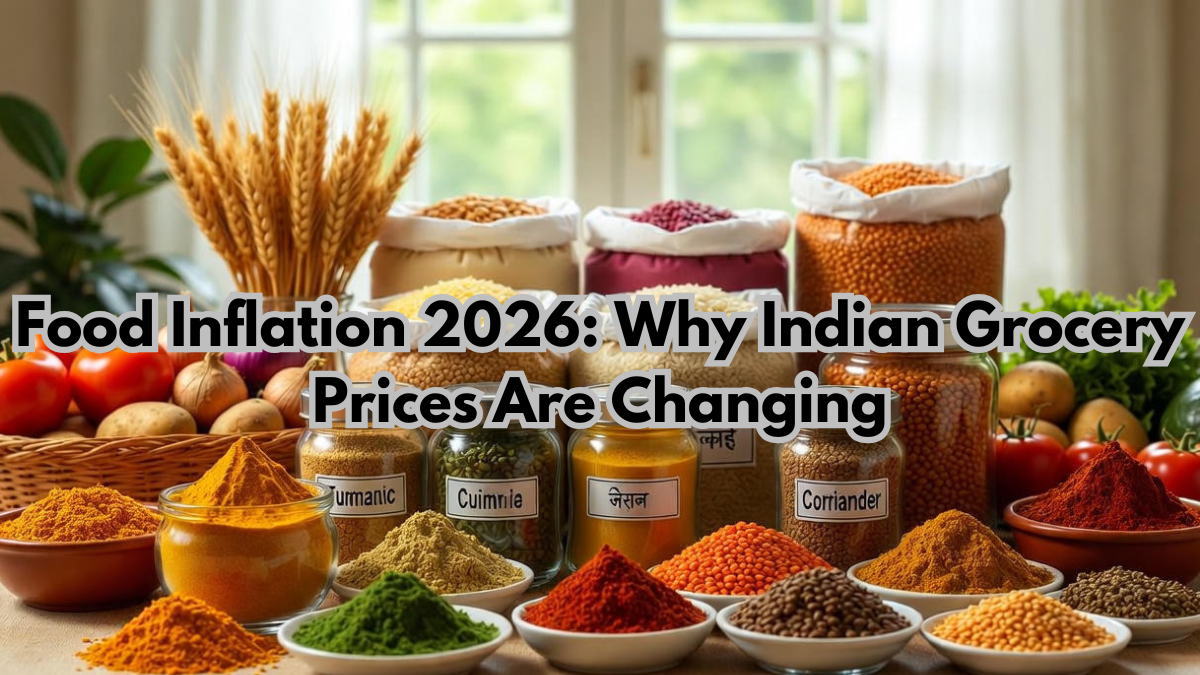The rising trend of food inflation india has become a major concern for households across the country. As families adjust their monthly budgets, one of the most noticeable impacts is the steady increase in basic food products such as cereals, vegetables, dairy, and edible oils. With economic uncertainties and global market fluctuations, experts predict that grocery prices 2026 may experience further shifts influenced by climate patterns, supply chain pressures, and consumer demand. Understanding why these changes are happening is essential for both consumers and policymakers as the nation prepares for new economic realities.

Why Food Inflation Is Rising Across India
The ongoing rise in food inflation india can be attributed to several interconnected factors. Extreme weather events—such as heatwaves, erratic rainfall, and unseasonal floods—have affected crop yields, creating instability in the agricultural supply chain. As a result, the cost of production has increased, forcing farmers and suppliers to raise market prices.
Another factor influencing grocery prices 2026 is the high cost of logistics. Fuel prices play a major role in transporting food items across states. When transportation becomes expensive, the final cost of essential goods rises. Additionally, rising global commodity prices have affected imports of edible oils, pulses, and packaged food products.
How Demand and Supply Imbalances Impact Prices
The Indian food market often faces cycles of oversupply and shortage, which contribute to fluctuating food inflation india rates. For instance, bumper harvests may temporarily reduce prices, but droughts or pest attacks can quickly reverse the situation. These inconsistencies cause significant price volatility, especially in vegetables and perishable items.
Changing consumer preferences are also shaping grocery prices 2026. As more people shift toward ready-to-eat meals, organic produce, and healthier food alternatives, the demand for premium items increases. This leads to higher prices in certain categories, even when overall inflation remains moderate. Supply chain modernization is still underway, and until storage and cold-chain infrastructure improves, price fluctuations will continue.
Table: Key Factors Influencing Food Prices in India
| Factor | Impact on Prices | Relation to Inflation |
|---|---|---|
| Climate Conditions | Damaged crops and reduced supply | Drives food inflation india |
| Transportation Costs | Higher delivery expenses | Increases cost of essentials |
| Import Dependence | Price volatility in global markets | Affects grocery prices 2026 |
| Consumer Demand | Shift toward premium choices | Causes selective price hikes |
This table highlights the primary reasons why India’s food markets remain sensitive to internal and external pressures.
Predictions for Grocery Prices in 2026
Analysts expect that grocery prices 2026 will depend heavily on advancements in agriculture, infrastructure improvements, and global economic stability. If current trends continue, items such as pulses, edible oils, and milk may witness moderate price increases. However, improved irrigation systems, agri-tech solutions, and government subsidies could help stabilize prices of staples like rice and wheat.
Another major factor influencing food inflation india in the coming years will be global climate policies. Nations are likely to prioritize food security, resulting in stricter trade regulations. This could increase the cost of imported food items, making India more dependent on domestic production. In contrast, digital agriculture tools such as smart sensors and AI-driven crop monitoring may help control inflation if implemented widely.
Government Initiatives to Control Price Rise
To manage the rise in food inflation india, the government is investing in modern storage systems, improved farm-to-market connections, and new agricultural incentives. Minimum support price reforms, crop insurance schemes, and irrigation projects are designed to protect both farmers and consumers from sudden price shocks.
Policies aimed at controlling grocery prices 2026 include boosting domestic oilseed production, expanding warehousing facilities, and improving food distribution networks through e-market platforms. Strengthening these systems ensures stable prices and reduces reliance on imports, helping households manage their expenses better.
Conclusion
The rising trend of food inflation india is shaped by a complex combination of global events, climate factors, and domestic supply challenges. As India prepares for grocery prices 2026, it becomes more important for families, farmers, and policymakers to adapt to an evolving food economy. With better infrastructure, sustainable agriculture, and improved market systems, India can build a more resilient future where food prices remain stable and accessible for all.
FAQs
Why are food prices rising in India?
Food prices are increasing due to climate changes, transportation costs, and fluctuations in crop production.
How will grocery prices 2026 affect households?
They may increase household spending as certain essentials could become more expensive due to supply and demand shifts.
Can government policies reduce inflation?
Yes, improved storage, subsidies, and better farming support can help stabilize food inflation india.
Which food items are expected to see major price changes?
Items like edible oils, pulses, and dairy products may experience notable changes in grocery prices 2026.
Click here to learn more